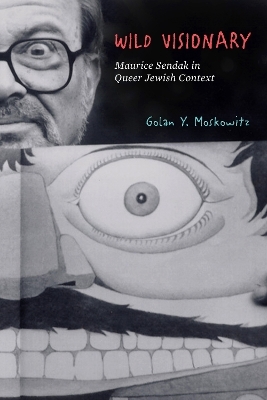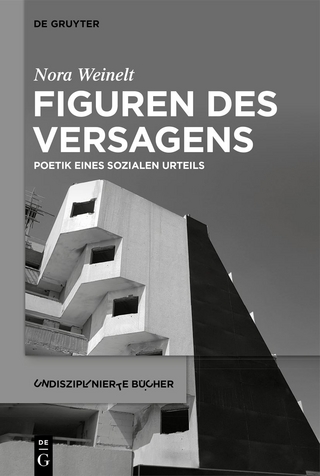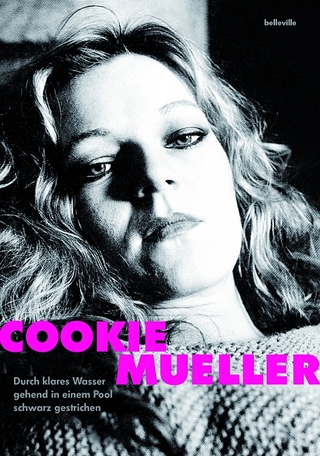
Wild Visionary
Stanford University Press (Verlag)
978-1-5036-1381-2 (ISBN)
Interweaving literary biography and cultural history, Golan Y. Moskowitz follows Sendak from his parents' Brooklyn home to spaces of creative growth and artistic vision—from neighborhood movie palaces to Hell's Kitchen, Greenwich Village, Fire Island, and the Connecticut country home he shared with Eugene Glynn, his partner of more than fifty years. Further, he analyzes Sendak's investment in the figure of the endangered child in symbolic relation to collective touchstones that impacted the artist's perspective—the Great Depression, the Holocaust, and the AIDS crisis. Through a deep exploration of Sendak's picture books, interviews, and previously unstudied personal correspondence, Wild Visionary offers a sensitive portrait of the most beloved and enchanting picture-book artist of our time.
Golan Y. Moskowitz is Assistant Professor of Jewish Studies and Catherine and Henry J. Gaisman Faculty Fellow at Tulane University.
Contents and AbstractsIntroduction: Introduction: From Limbo to Childhood chapter abstractThis chapter introduces the book's approach of situating a cultural giant within several intersecting histories and minority discourses, as well as analyzing the artist's work as an embodied testament to a complex historical and cultural experience. Contextualizing Sendak's sensitive but convoluted subjectivity within histories of modern childhood, Jewish American acculturation, and enduring affiliations between queer difference and children's literature, it offers a roadmap for the book and orients the project within broader studies of childhood, Jewishness, queerness, and affect.
One: Where the Wild Things Acculturate: Roots and Wings in Interwar Brooklyn chapter abstractChapter 1 situates Sendak's artistic vision within intertwined histories of immigrant acculturation and the emergence of modern childhood. Early twentieth-century immigrants' children were in some ways socialized out of their own families of origin. Sendak was born into a zeitgeist of speed and mobility in a culture that celebrated mechanical innovation, youth, capitalism, and superhero fantasies. Popular consumerism exploded alongside the solidification of child psychology, surges in global antisemitism, and rising anxieties about fascism. Social commentators envisioned minorities and cityscapes as potentially threatening to the American child's healthy development. Sendak grew up sensitive to his parents' anxieties as Jewish immigrants and mesmerized by gritty urban spectacles and mass media. His youth clashed with dominant conceptions of childhood as a time of rose-colored, protected innocence. His creative work would instead convey the culturally fraught separation anxieties experienced between immigrant parents and American children in the interwar urban landscape.
Two: Love in a Dangerous Landscape: Queer Kinship and Survival chapter abstractFocusing on the years of World War II, Chapter 2 examines Sendak's creative notions of kinship in dialogue with literature of Jewish families in contexts of migration, collective mourning, and survival. Sendak spent the war years as a young adolescent, aware that his relatives were being murdered in Nazi-occupied Poland. Tumultuous, but tight-knit relationships within his mourning family elucidate the almost divine significance his work would attribute to ruptured parent-child boundaries, creative sibling bonds, and queer yearnings. His work took elements characteristic, if stereotypic, of twentieth-century Yiddish-speaking Jewish families and transformed them into nursery rhyme and fairy tale archetypes. Sendak's childhood location within a milieu repeatedly targeted for violent destruction and shrouded in traumatic losses reverberates in his work. His mythical and cosmic fusions convey feelings about growing up with precarious identifications and emotional investment in familial pasts that he did not directly experience.
Three: Surviving the American Dream: Early Childhood as Queer Lens at Midcentury chapter abstractIn the immediate postwar years, the young Sendak continued to negotiate competing realities. The dominant "American Dream" idealized childhood innocence, heterosexual marriage, and the suburban nuclear family; his parents' Jewish Brooklyn community mourned destroyed communities of origin; and his own relocation to Manhattan offered fraught realms of discreet exploration as a gay man. This chapter examines how the artist preserved his sense of self apart from a mainstream culture that devalued ethnically and sexually atypical people. Sendak's beginnings as an illustrator and picture-book artist reflect an unassimilable subjectivity that separated him from dominant social meanings and encouraged his investment in excavating his early childhood self. With the help of queer and Jewish mentors, including picture-book author Ruth Krauss and a gay Jewish therapist named Bertram Slaff, Sendak solidified his creative vision and began to subvert the limitations of the American Dream with queer and ethnically marginal elements.
Four: "Milk in the Batter" and Controversy in the Making: "Camp," Stigma, and Public Spotlight in the Era of Social Liberation chapter abstractFocusing on the 1960s and 1970s, Chapter 4 connects Sendak's use of child's play to the challenges and triumphs of excluded and stigmatized outsiders. Sendak participated in a tradition historically employed by insider-outsider minorities, including Jews and queer people, whose difference could be selectively hidden in order "to pass." This chapter examines Sendak's relationship to costume, to the dramatic arts, and to spaces of social liberation, including Fire Island, as well as his use of child's play, theatricality, and "Camp" sensibilities in correspondences and picture books to work through feelings of queer shame and social incoherence. It reads his creative process in dialogue with sociological writing on the creativity of stigmatized individuals, queer theories of time and space, and psychoanalytic writings on the "creative personality." Sendak harnessed a stigmatized subjectivity to create messages that spoke to those disenchanted with the homogenous, middle-class ideals of midcentury America.
Five: Inside Out: Processing the AIDS Crisis and Holocaust Memory Through the Romantic Child chapter abstractChapter 5 focuses on Sendak's life and work in the years following his move to Ridgefield, Connecticut, in 1972, exploring how notions of "inside"' and "outside" intensified in his creative vision. As late twentieth-century Jews became, generally speaking, more enfranchised in middle-class America and were increasingly essentialized as complacent beneficiaries of "White privilege," anxiety about the need to preserve Jewish distinctiveness increased. Meanwhile, America institutionalized Holocaust memory and became more comfortable with Old World nostalgia. Mainstream culture in the 1980s also retreated from social liberation movements, empowering homophobia and social conservatism. Considering these contextual shifts, this chapter studies the aging Sendak's creative handling of boundary violations and "unnatural," death-infused relations, including visual mergers of the Holocaust with the AIDS crisis. It asks how he reconciled a political calling he felt during that crisis, which took many of his loved ones, with an impulse to turn inward.
Conclusion: Conclusion: A Garden on the Edge of the World chapter abstractThis section reflects broadly on social and cultural influences that shaped Sendak's art, as well as on his legacy as a critic of collectively imposed simplifications of childhood. It connects the concerns of his art to contemporary creative representations of childhood, as well as to enduring social inequities. Childhood continues to operate as a cultural site contributing to definitions of deviance, as well as to the inclusion and exclusion of various minority populations, including Black Americans. Sendak celebrated the sensitivity, ferocity, and playful liminality of childhood, cultivating his own "inner child" as a position from which to articulate the complexity of a displaced queer subjectivity in a displaced immigrant family unit, as well as the dangers of puritanism and social coercion in the public sphere.
| Erscheinungsdatum | 16.11.2020 |
|---|---|
| Reihe/Serie | Stanford Studies in Jewish History and Culture |
| Verlagsort | Palo Alto |
| Sprache | englisch |
| Maße | 152 x 229 mm |
| Themenwelt | Geisteswissenschaften ► Sprach- / Literaturwissenschaft ► Anglistik / Amerikanistik |
| Geisteswissenschaften ► Sprach- / Literaturwissenschaft ► Literaturwissenschaft | |
| ISBN-10 | 1-5036-1381-X / 150361381X |
| ISBN-13 | 978-1-5036-1381-2 / 9781503613812 |
| Zustand | Neuware |
| Informationen gemäß Produktsicherheitsverordnung (GPSR) | |
| Haben Sie eine Frage zum Produkt? |
aus dem Bereich


